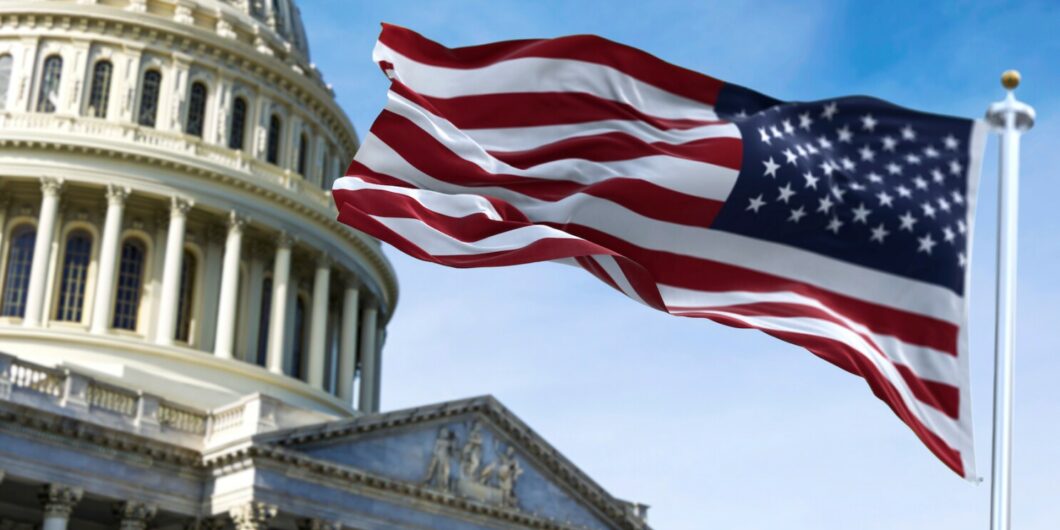Our Partisan Future?
I admit to being more optimistic about America’s future than most commentators, left or right. Progressives have spent the better part of a decade warning that fascism is an imminent threat. Too many conservatives, for their part, have settled into an apparently interminable era of gloom and Ronald Reagan’s cheerful optimism feels like a distant memory. We hear instead that traditional conservatism needs to be replaced with some form of “post-liberalism.” Concerned pundits speak of—and some radicals hope for—a looming era of civil unrest and perhaps even civil war, suggesting our national divisions are beyond reconciliation.
These doomsayers are mistaken. Unfortunately, perceptions about the state of American politics matter, and our mistaken beliefs about the size and importance of our political disagreements make American politics more contentious than it needs to be. Political scientist Matthew Levendusky, a professor at the University of Pennsylvania, has written a book that he hopes will help ease some of the tensions in American political life. Levendusky has previously published important work on the nature of polarization in the US, most notably his 2007 book, The Partisan Sort. His new book, Our Common Bonds: Using What Americans Share to Help Bridge the Partisan Divide, is a fascinating and potentially useful exploration of what social science literature can tell us about contemporary partisan anger and how it can be alleviated.
On most questions, Americans are only “polarized” if we take a very myopic view of policy and the ideological spectrum. The claim that Republicans have become “radicalized” is especially preposterous. On most questions of policy, whether social or economic, Republicans have been moving, on average, in a more liberal direction. Many on the right can be justifiably frustrated by this, but reasonable people of all political persuasions should be comforted to know that the typical Republican voter does not crave anything resembling fascism. Most Democrats are similarly not the revolutionary communists that right-wing talk radio show hosts and online influencers suggest they are.
On one dimension, however, polarization is very real. Republicans and Democrats really hate each other. This is a bit confusing given that, in terms of their actual views on policy, they are no more distant from each other than they have ever been. It is nonetheless the case that partisan anger, what political scientists call “negative partisanship” or “affective polarization,” has rapidly increased, making political compromise more difficult and national politics dysfunctional.
The Big Middle
Levendusky’s book accurately points out that much of our polarization is driven by misperceptions. Republicans and Democrats alike believe their partisan opponents are much more radical than is actually the case. The media has played an important role in this, tending to focus their attention on extremes. This is especially true of ideological media figures, who are always on the lookout for outrageous behavior from the other side and using those unusual outliers to pillory half the country. It is also true, however, that more mainstream sources of news also tend to highlight the most intemperate members of congress and the most unhinged groups and figures in the public. The moderate middle, which still contains most Americans and politicians, is too often ignored or treated as unimportant.
The good news, according to Levendusky, is that reminding Americans how much they have in common with people across the partisan divide can go a long way to reducing partisan animosity. It cannot make it disappear, and perhaps we should not want it to disappear entirely, given that there are real and important philosophical differences between the parties, but it is possible to make people less rancorous.
With a series of experiments, Levendusky shows that reminding Americans that they share many common identities with their political opponents can reduce feelings of anger. The first shared identity is the most obvious and intuitive: our shared identity as Americans. Events that prime our national identity, such as the Fourth of July or the Olympic Games, are associated with declines in partisan anger. These are not events that can be consistently recreated, but these findings do indicate that reminders of our shared status as Americans can alone help us bridge partisan divisions.
Levendusky adds the caveat that most of the data demonstrating the salutary effects of priming our national identity were collected before President Trump was elected to office, and the partisan gap in patriotism has since grown larger. This indicates that this intervention may now only be effective for Republicans. Levendusky blames Trump and his supporters for the politicization of the American identity, which is not entirely fair. Prominent voices on the left had been moving in an overtly anti-American direction for some time, and I am not convinced this trend would have followed a different trajectory if Clinton had won the Electoral College in 2016.
Our Common Bonds offers hope that our current era of intense partisan hatred could come to an end, or at least become less intense.
Other forms of shared identity remain decidedly non-partisan, however. One of the book’s most interesting and surprising findings is that sports fandom can “reduce animus toward those from the other party.” When sports fans learn that someone from the other party roots for their favorite football team, their average negative feelings toward this hypothetical Democrat or Republican diminish—as do their negative feelings toward the opposing party as a group.
The book also demonstrates the importance of cross-party friendships. Levendusky points out most people have friends on the other side of the political divide, even during this era of negative partisanship. Reminding people that they know and like people of the opposing partisan persuasion decreases their hostility toward the other party.
Dialogue with partisans on the other side of the political divide can also make people realize that they have more in common with members of the opposing party than they realize. There is unfortunately an important limitation to this. Cross-party dialog is especially effective in instances of face-to-face communication, where people are likely to practice basic norms of civility. The online world of anonymous or semi-anonymous social media and comment sections, where partisan hyperbole is the norm, is unlikely to foster such positive results. As Levendusky points out, a “genuine conversation centered on mutual respect—and not just a shouting match—will be needed to overcome political differences.”
All of this matters because negative partisanship has consequences for our politics. Reducing our negative feelings toward the opposing party also increases our partisan ambivalence. We become less entrenched in our party loyalty and more willing to consider a candidate from the other side. We also become less likely to reflexively take partisan cues when evaluating information, “getting citizens to be slightly more even-handed in how they view the political world.”
From Ideas to Reality
Levendusky provides a few ideas about how his research could be applied in the real world. This is the most disappointing part of the book. Levendusky has positive things to say about groups that try to facilitate “respectful and civil discussions across party lines with a goal of mutual understanding.” I agree that these efforts are admirable and should be encouraged. I unfortunately do not foresee them as ever reaching a sufficient number of people to make a dent in the national trend.
Levendusky also hopes that changes to civics education could facilitate helpful conversations, suggesting we need to make a conscious effort to teach people “how to have productive conversations around political topics.” That may be a good idea, but the book does not go into much detail about what that kind of curriculum would look like, or show evidence that, say, a high school lesson about “mutualistic listening” would have long-term benefits. Maybe it would, but I want to see more research on that subject before concluding it would make a major difference.
One problem, which Levendusky does not address, is that an extremely vocal minority of Americans do not want to reduce negative polarization. I do not think it is an exaggeration to say that, for the most bitter ideologues, being angry about politics on the Internet, and sharing their partisan hatred as far as they can, is their hobby. They have convinced themselves that every political dispute is an existential struggle against malevolent forces, and reducing partisan tensions requires capitulation to evil. These people will not be persuaded that cross-party dialog is a good use of time, and they will continue to play a major role in setting the tone for American politics.
Perhaps this is where research by philosopher Robert Talisse could be helpful. Convincing ideologues to be less hostile to the other party via vague appeals to democratic norms may be a non-starter. Such requests may work better if we make them in the name of partisan self-interest. Talisse made a compelling argument that the most bitter partisans are not especially effective at achieving their political goals—they have a hard time, for example, building powerful political coalitions. Like Levendusky, Talisse, unfortunately, provided few ideas for creating scalable interventions that could change the overall tone of American politics. However, when imploring die-hard partisans to listen to their opponents and maintain a baseline of civility, appeals to their own partisan interests may be the only effective form of argument. I hope to see future research on that possibility.
Levendusky’s research will not provide a panacea to America’s partisan woes. To his credit, he does not suggest that it would. His book nonetheless offers hope that our current era of intense partisan hatred could come to an end, or at least become less intense. This work should be embraced and promoted by all Americans who wish to bring about a new era of civil, good-faith partisan debate.


